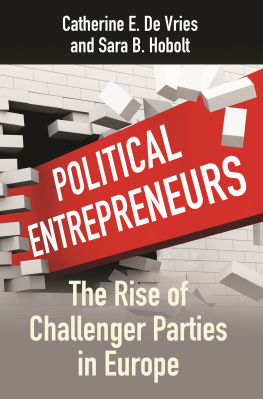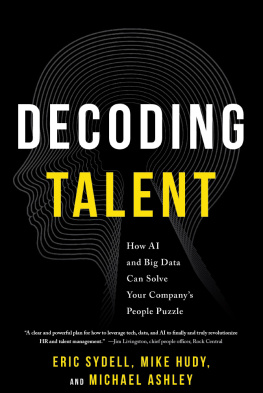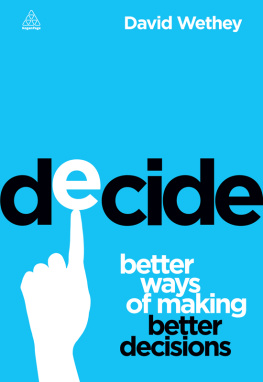PREFACE
This book is the result of a long conversation between two colleagues and friends. It is the outcome of our personal experiences with as well as our research on political change in Western Europe. This conversation started about 16 years ago when we were both completing our doctoral research on ruptures in European politics. We met at a conference held at the Johns Hopkins University School of Advanced International Studies in Bologna, Italy. Born Danish and Dutch, we were perhaps not as taken aback as others by the rise of the populist far right in Europe. We were familiar with the successful political entrepreneurship of Mogens Glistrup, founder of the Progress Party in Denmark, and Pim Fortuyn, founder of the List Pim Fortuyn in the Netherlands. The permissive electoral rules in Denmark and the Netherlands had allowed electoral breakthrough of such challenger parties long before they succeeded elsewhere. At the same time, a comparison of our Danish and Dutch experiences presented us with an interesting puzzle about the timing of political change. The landslide election that shook up the political mainstream in Denmark occurred in the early 1970s, whereas Dutch mainstream parties remained resilient for much longer. This raised questions about why the pace and nature of political change were so different in countries otherwise so similar.
In our search for answers, we both noted an apparent schism between the scholarship on political parties and political change in Europe and that in the United States. Each of us had spent time at an American university, the University of North Carolina at Chapel Hill and the University of Michigan, and we were struck by the differences between how Americanists and Europeanists would explain political change. As students of politics in Europe, we were well-versed in sociological theories of political parties as expressions of societal divisions rooted in big historical divides. Yet, our exposure to scholarship on American politics presented us with another, equally compelling, image of political parties as an organizational vehicle for the strategic interests and actions of political elites. Our intellectual journey to understand political change, which is documented in this book, started with Seymour Martin Lipset and Stein Rokkan and their cleavage theory, and was enriched by classic books on American politics, such as The Semisovereign People by Elmer Schattschneider, Liberalism against Populism by William Riker, Why Parties? by John Aldrich, and Issue Evolution by Edward Carmines and James Stimson. Our theory of political change that is at the heart of this book fuses insights from the pathbreaking work on party competition in both Europe and the United States.
As such, this book is inspired by the work of incredible scholars of European politics, including James Adams, Lawrence Ezrow, Mark Franklin, Liesbet Hooghe, Ronald Inglehart, Orit Kedar, Herbert Kitschelt, Hanspeter Kriesi, Peter Mair, Gary Marks, Bonnie Meguid, Cas Mudde, Pippa Norris, and Robert Rohrschneider (and many others), as well as the seminal work on American politics by John Aldrich, Edward Carmines, Tom Carsey, Robert Erikson, Michael MacKuen, William Riker, Elmer Schattschneider, James Stimson, and many others. Another critical source of inspiration has been the work on political parties and electoral politics in developing democracies by scholars like Kevin Deegan-Krause, Tim Haughton, Noam Lupu, Beatriz Magaloni, and Joshua Tucker (and many others). This book is the result of us being able to stand on the shoulders of these intellectual giants, many of whom we had the pleasure of exchanging our ideas with in person.
Our own ideas have developed over a number of years. They build on our previous work on challenger parties and issue entrepreneurship that was published in European Union Politics in 2012, the European Journal of Political Research and the Journal of Politics in 2014, and Comparative Political Studies in 2015. We wish to thank our coauthors on two of these articles, Jae-Jae Spoon and Marc van der Wardt, for their important contributions to our thinking. We are also grateful to Julian Hrner and Mariken van der Velden, who worked with us on the research presented in , respectively. Originally, we set out to write a book about just challenger parties, but we soon realized that the story of postwar European politics is just as much about the resilience of mainstream parties as it is about the rise of challengers.
In this book, we wish to tell a story of European party politics that is not simply focused on the last decade of turmoil, but that can help us understand decades of both stability and change in party systems across Europe. We adopt a long-term and comparative perspective to explain the nature of political change in Europe, combining quantitative evidence with qualitative case studies. The book is designed to be accessible to a broader audience of readers interested in understanding the changes in politics that we have been observing over the past decades. This more accessible format has presented us with some difficult choices, however. The book relies heavily on descriptive inference using observational data and case studies, rather than on causal inference and experiments. This is not because we think that causal identification is not important, but because the questions this book aims to cover often do not lend themselves to more narrowly focused causal inference research designs. In our view, the ability to causally identify political phenomena should not limit the questions we aim to address as political scientists.
Our analyses of long-term and cross-national patterns of political change and stability in Europe have been possible only because of the vital data collection efforts of teams of scholars over many decades. The analysis presented here relies on data from the Chapel Hill Expert Survey (CHES), the Comparative Study of Electoral Systems (CSES), the European Election Studies (EES), the Manifesto Project Database (MARPOR/CMP), ParlGov, and national election studies, among other data sources. These collaborative data collection projects provide an invaluable public good for scholars of European politics, and we are grateful to all the individuals who have contributed to them. We are also very fortunate to have worked with some amazing research assistants: Philipp Dreyer, whose help with data collection and data analysis has been invaluable, as well as Diane Bolet, Julian Hrner, Pia Nagl, Pit Rieger, and the many coders of antiestablishment rhetoric at the Vrije Universiteit Amsterdam, who all performed excellent work. We are grateful for the generous funding by the European Research Council (ERC GA 647835, EUDEMOS, PI: Sara Hobolt) and a VU Interdisciplinary Centre for European Studies (VICES) research grant (PI: Catherine De Vries), which gave us the necessary time and resources to work on this ambitious project.










